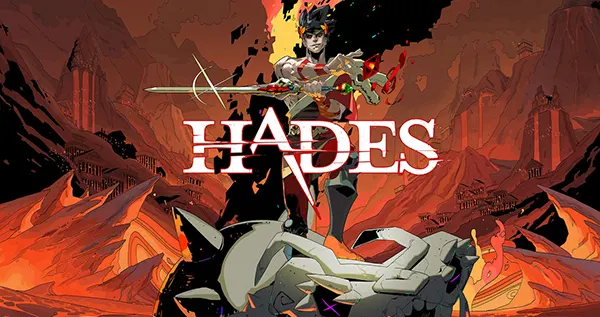
Hades: Mobile – First Impressions of Supergiant Games’ Cult Classic on Smartphones
Hades has finally arrived on smartphones in early 2025, offering players a chance to explore the Underworld from the palm of their hand. Originally celebrated on PC and consoles, the mobile release of this rogue-like dungeon crawler brings both excitement and scepticism. Can the complexity of Zagreus’ journey and the finesse of Supergiant Games’ design be translated to touchscreens effectively?
Visuals and Performance
The mobile version of Hades maintains the signature visual charm the studio is known for. The vibrant, hand-drawn art style has been meticulously optimised for smaller screens without losing detail or clarity. The game runs smoothly on current-generation flagship devices, achieving stable frame rates even during intense action sequences.
Animations remain fluid and responsive, crucial for a game that thrives on quick reflexes and precise movements. Special care has been taken to preserve the atmosphere of the Underworld, with lighting effects, particle systems and enemy designs all transferred seamlessly from the original versions.
However, some performance issues appear on mid-range or older devices. Occasional frame drops and longer loading times slightly affect the overall experience. Users with higher-end smartphones will enjoy the game without compromises, but others might need to tweak settings or close background apps for optimal performance.
Touch Controls and Accessibility
One of the most significant challenges in adapting Hades to mobile was reworking the controls. Touchscreens are rarely ideal for action games requiring pinpoint accuracy. Yet, Supergiant Games managed to implement a control scheme that balances simplicity with functionality. Virtual joysticks and on-screen buttons are responsive, although they demand some adjustment time for new players.
The developers included customisation options, allowing users to reposition buttons and change sensitivity. While not flawless, these options make a noticeable difference for accessibility and comfort. Casual players might find the auto-aim and smart targeting features particularly helpful during early stages.
Still, hardcore fans might prefer the tactile feedback of controllers. Fortunately, external Bluetooth controller support is available and well-integrated, offering an experience closer to the original console gameplay.
Gameplay Experience on Mobile
The core gameplay loop of Hades remains fully intact in the mobile edition. Players still control Zagreus as he attempts to escape the Underworld, encountering mythological figures and collecting boons along the way. Each run feels fresh thanks to procedural generation, various weapon types and unique upgrade paths.
Sessions remain perfectly suited for short bursts of play. Given the inherent design of Hades—where each escape attempt lasts from ten to thirty minutes—the mobile version naturally complements on-the-go gaming. Cloud saves and cross-progression with other platforms (for selected accounts) are supported, making it easy to switch between devices.
The game is free from aggressive monetisation, which is refreshing in a market saturated with microtransactions. This is a complete premium release, including all updates and content from previous versions. Players pay once and gain full access—no ads, no energy bars, and no artificial progress blockers.
Adaptations and UI Adjustments
The user interface has been adapted for touch interaction without feeling cramped. Menus, map overlays, and dialogue screens have been resized and repositioned with mobile ergonomics in mind. Icons are large enough to avoid accidental taps, and swipe gestures have been added for intuitive navigation.
Text and tooltips are clear and readable on smaller displays. Inventory and boon management remain accessible, although some UI elements, such as detailed boon trees, can feel slightly cluttered on devices with smaller screens. Landscape orientation is mandatory, but the UI design fully supports this layout.
Sound design remains exceptional. The mobile version includes the full soundtrack and voice acting without compression or omissions. This ensures the emotional and thematic depth of the story remains uncompromised, a critical aspect of what made Hades stand out in the first place.

Availability and Device Compatibility
Hades: Mobile launched in February 2025 for both Android and iOS. It is currently compatible with devices running iOS 16+ and Android 12+, although performance varies based on hardware specifications. Officially supported devices include recent models like the iPhone 13 and later, Samsung Galaxy S21 and above, and Google Pixel 6 series.
The game is available for purchase through standard digital storefronts such as the App Store and Google Play. The one-time purchase model is clearly communicated, and regional pricing is consistent with other premium mobile games. Updates and patches are delivered regularly, with bug fixes and performance improvements released shortly after launch.
Customer support is responsive, and community feedback has already influenced minor tweaks in the UI and gameplay. Forums and social media pages serve as active hubs for tips, feedback and shared runs, demonstrating a strong player base even on mobile platforms.
Market Impact and Reception
Initial reception of the mobile version has been largely positive, especially among fans who wanted a portable version of Hades without losing quality. Reviewers praised the visual and gameplay fidelity, as well as the decision to preserve the complete content package without paywalls.
Critics did highlight the limitations of touchscreen controls and performance inconsistencies on older devices. However, these concerns were tempered by the availability of controller support and the fact that the game doesn’t compromise core mechanics. The mobile adaptation has been hailed as one of the most competent translations of a complex action title in recent years.
From a market standpoint, Hades: Mobile reinforces the growing demand for serious, high-quality single-player experiences on smartphones. It sets a precedent for future ports, showing that mobile gamers are eager for more than just casual or freemium offerings.
